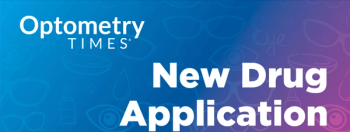
- December digital edition 2022
- Volume 14
- Issue 12
Identifying contoured prism lens patients
An increase in screen time has led to a rise in binocular vision disorders.
Traditionally, eye care providers (ECPs) have used all the tools at our disposal to help patients enjoy clear vision, with the ultimate goal of reaching a best-corrected visual acuity (BCVA) of 20/20, or better.
As reliance on smartphones and computers has escalated, the prevalence of digital device syndrome symptoms—such as dry eye sensation, headaches, and stiff neck—has increased proportionally. This trend has helped us gain a greater appreciation for the vital role that vision comfort plays in visual function.
Binocular vision disorders (BVDs) and ocular misalignment are also associated with dry eye sensation, headaches, and stiff neck. Here’s why: BVDs lead to an increased effort by the visual system to realign, and repeated effort to realign causes an overstimulation of the trigeminal nerve.1
This sensory irritation results in painful stimulation of several parts of the eye, as well as the head and neck, and it triggers trigeminal dysphoria, with symptoms including headache, neck pain, and eye strain.1 The ability to manage ocular misalignment at both distance and near is integral to resolving the symptoms of trigeminal dysphoria.1
If a patient is comfortable in glasses but uncomfortable in contact lenses this can be a red flag indicating the possibility of a BVD or ocular misalignment. Spectacles prescribed for myopia are thick on the edge and thin in the center, and with up-close work— more prevalent now, given today’s widespread dependence on digital screens—the pupils get smaller and the eyes turn inward.
There is some base-in prism effect and, as a result, comfort as the eyes turn in with myopic glasses. That effect is absent with contact lenses and can contribute to contact lens discontinuation.
Contoured prism lenses
Years of research into BVDs and ocular misalignment have culminated in development of corrective diagnostic technology—with the Neurolens Measurement Device, Generation 2 [NMD2] (Neurolens)—and contoured prism lenses—with Neurolenses (Neurolens). The NMD2 is a diagnostic tool that generates a contoured prism lens prescription by factoring in measurements that are critical for binocular fusion, such as heterophoria, fixation disparity, and the accommodative convergence response.
Neurolens contoured prism lenses allow eyes to compensate for an increase in exodeviation that occurs at near by providing an increased amount of prism at near that is independent from the amount of prism prescribed for distance.
When evaluating patients, it is important to understand that there is no correlation between the degree of misalignment and the severity of symptoms. A patient with 1PD exophoria and a patient with 10PD exophoria could experience the same severity of symptomology, and even small horizontal prism corrections (< 1PD) can provide significant relief in symptomatic patients. Historically, patients who could benefit from small prismatic corrections of < 2PD have been overlooked.
Chronic headache study
Most patients with symptoms of digital device syndrome exhibit different magnitudes of eye misalignment at different viewing distances. However, unlike contoured prism lenses, standard prisms are limited to providing correction at only 1 distance.
Neurolenses are the result of coordinated efforts among optometry, ophthalmology, and neurology professionals working toward the common good of our patients.
Together with an earlier iteration of the NMD2, Neurolenses were evaluated for their impact on patients with refractory daily headaches, and symptoms were reduced significantly.2 The Chronic Daily Headache Study had enrolled 186 patients, and only 7 were lost to follow-up (Figure 1).
Self-reported efficacy utilizing the Headache Impact Test (HIT-6), a validated metric for gauging severity of headache symptoms, indicated that, after 90 days, 146 of the 179 patients (81.6%) reported a positive response to treatment.
The data further show that patients who suffered from the most severe headache symptoms upon entering the study reported the greatest benefit in terms of symptom relief. Of these patients, 54% reported their headaches were substantially reduced or gone.
Another important finding is that patients stopped taking many of their headache medications within 90 days of wearing the contoured prism lenses. Not directed by their doctor, nearly 30% of the patients stopped needing 90% of their headache medications, and 50% stopped taking more than 50% of their headache medications.2
HIT-6 measures the impact headaches have on a person’s ability to accomplish the activities of daily living. HIT-6 scoring assigns point values to symptom frequency, which increase proportional to symptom severity. A change of 6 points in a patient’s score over time is indicative of 1 lifestyle change.3,4
The Chronic Daily Headache Study demonstrated a mean reduction in HIT-6 scores of 7.64 and was highly statistically significant. This result suggests that contoured prism lenses are efficacious in a population for whom other conventional headache treatments were ineffective.2
Following the Chronic Daily Headache Study, a survey of 360 patients fitted with contoured lenses was conducted (Figure 2). The survey asked: “Would you recommend this to your friends and family?”
More than 90% responded, and 82% said they would recommend the contoured lenses to their friends and family. Participants completed surveys at 90 days and 1 year after receiving their contoured prism lenses.5
The ophthalmic connection
Correction with contoured prism lenses has been shown to resolve trigeminal nerve disorder symptoms substantially and often completely,5 thus putting the onus on ECPs and vision correction rather than patient behavior modification (ie, reduced screen time).
It is important for all ECPs to look for and recognize signs and symptoms of BVDs and ocular misalignment and to ask patients whether they are experiencing symptoms—such as dry eye sensation, headaches, and stiff neck—that they otherwise might not reveal.
Binocular vision disorders, trigeminal dysphoria, and digital eye strain are often thought of as issues that fall primarily within the purview of optometry, but these conditions are equally relevant to ophthalmic surgery.
For instance, if someone is contact lens–intolerant but comfortable in glasses because of a BVD, it is important to know this before performing LASIK or cataract surgery. Thus, it is important for general ophthalmologists and ocular surgeons to recognize the signs of BVDs and work together to ensure that patients are referred to a practice that has appropriate diagnostic tools to confirm the diagnosis; then contoured prism lenses can be prescribed.
Addressing vision comfort is equally as important as addressing vision clarity. To do this, we must ask patients whether they are experiencing dry eye, frequent headaches, and/or neck and shoulder pain. If we don’t ask, they may not volunteer this important information, and the opportunity to improve their quality of life will be lost.
References
1. Digre KB. More than meets the eye: the eye and migraine-what you need to know. J Neuroophthalmol. 2018;38(2):237-243. doi:10.1097/WNO.0000000000000660
2. Miles C, Krall J, Thompson V, Colvard DM. A new treatment for refractory chronic daily headache. Neurolens. Accessed October 1, 2021. https://f.hubspotusercontent10.net/hubfs/5282963/Neurolens%20Chronic%20Daily%20Headache%20White%20Paper.pdf
3. Kosinski M, Bayliss MS, Bjorner JB, et al. A six-item short-form survey for measuring headache impact: the HIT-6. Qual Life Res. 2003;12(8):963-974. doi:10.1023/a:1026119331193
4. Yang M, Rendas-Baum R, Varon SF, Kosinski M. Validation of the Headache Impact Test (HIT-6) across episodic and chronic migraine. Cephalalgia. 2011;31(3):357-367. doi:10.1177/0333102410379890
5. Labhishetty, V. Neurolens: A comprehensive way to treat digital (computer) vision syndrome. Neurolens Access date July 15, 2022. https://5282963.fs1.hubspotusercontent-na1.net/hubfs/5282963/White%20Paper%20Booklet/Neurolens%20Symptom%20Relief%20White%20Paper.pdf
Articles in this issue
almost 3 years ago
Helping patients with poor adherencealmost 3 years ago
Geographic atrophy: What to know and whyalmost 3 years ago
Case report: Not all multiple sclerosis is equalalmost 3 years ago
Presbyopia: The ever-changing environment and elusive Holy Grailalmost 3 years ago
Making sense out of presbyopia clinical study dataalmost 3 years ago
Getting started: methods of initial scleral lens selectionNewsletter
Want more insights like this? Subscribe to Optometry Times and get clinical pearls and practice tips delivered straight to your inbox.



















































.png)


